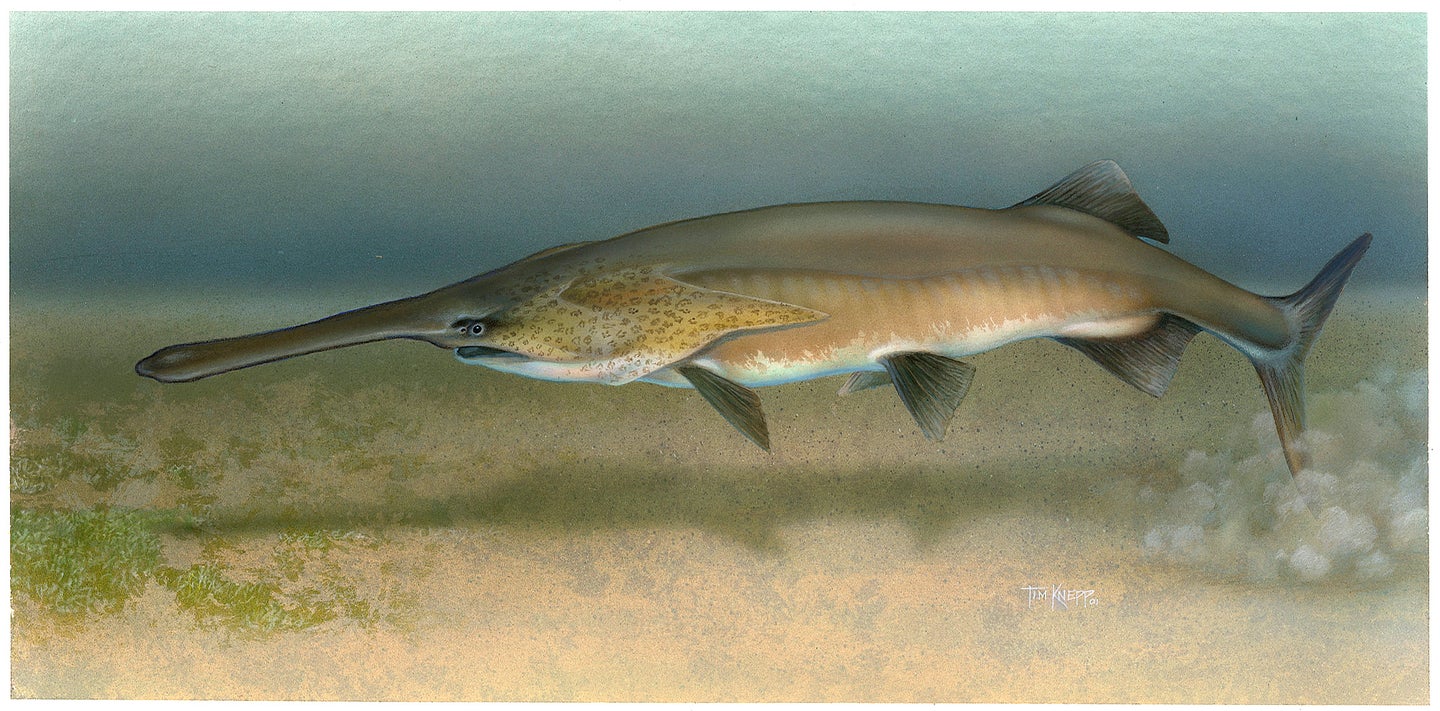Nearly All Vertebrates, Including Us, Descended From a Creature With An Electromagnetic Sixth Sense
Most of us lost our electrosensory abilities along the way

Birds and some mammals are able to sense the Earth’s magnetic field, using it to orient themselves and even look for prey. Other vertebrates can detect electric fields and use them for the same purpose. Apparently the fish from which humans and most other vertebrates are all descended had this sixth sense, and we just lost it along the way, a new study says.
The development of hair in vertebrates — which is still not well understood — may also be related to this ancient ability, the study authors theorize. Understanding how such an ancient and essential system evolved could help evolutionary biologists examine the heritage of other complex organ systems, like eyes or the brain.
The vertebrates’ common ancestor lived 500 million years ago and was probably a marine predator with good eyesight and a stripe along its side, which represented a lateral line system for detecting movement in the water. The line system, present in fish and some amphibians, contains sensory hair cells that are identical to the ones in our inner ears, which help the animal sense its environment. Fish use these cells to detect weak electrical signals in water, which helps them seek prey, avoid predators and even to communicate and school.
This line system is directly connected to the the evolution of other electrosensory abilities, according to the researchers — the first time this connection has been described. Through millions of years of evolution, most birds, reptiles and mammals lost their lateral lines, as well as their electrosensory abilities (with a couple exceptions).
A salamander called the Mexican axolotl has electro-sensing capability, as does the American paddlefish, whose roughly 70,000 electroreceptors in its paddle-shaped snout are easily the most of any living animal. Researchers at the University of Cambridge and Cornell University studied embryo development in paddlefish to watch how these receptors form.
They noted that the cells form in the same pattern in developing embryos of fish and previously studied axolotls, which confirms it’s an ancient system common to both lineages of vertebrates, actinopterygians and sarcopterygians. And they form immediately adjacent to the lateral line, which provides evidence that the two sensory systems share a common heritage, as a news release from Cornell explains.
This is interesting because these results will help biologists unravel the sensory capabilities of modern animals and their ancestors, and how the process of evolution allowed some animals, but not all, to keep this sixth sense. The study is published this week in Nature Communications.